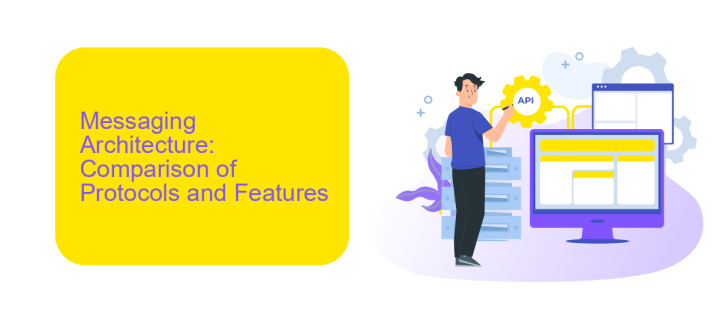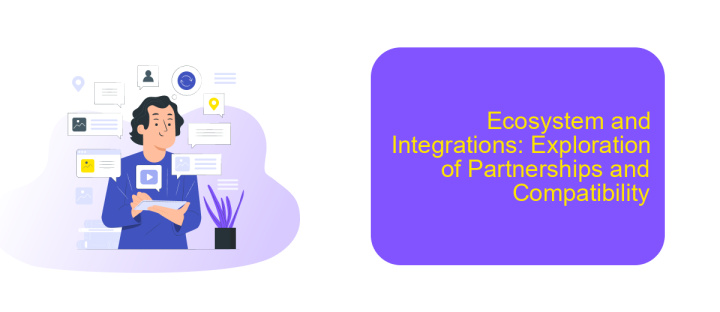Solace Vs Tibco
In the rapidly evolving landscape of enterprise messaging and event streaming, Solace and TIBCO stand out as two prominent players. This article aims to provide a comparative analysis of Solace and TIBCO, examining their features, performance, and suitability for various business needs. By understanding the strengths and weaknesses of each, organizations can make informed decisions on which platform best meets their requirements.
Introduction: Overview of Solace and Tibco
Solace and Tibco are two prominent players in the field of enterprise messaging and integration solutions. Both platforms offer robust capabilities to facilitate seamless data exchange and integration across various systems, ensuring reliable and efficient communication within an enterprise ecosystem.
- Solace: Known for its event-driven architecture, Solace provides high-performance data distribution with low latency. It supports multiple messaging protocols and offers a cloud-native platform, making it suitable for modern, scalable applications.
- Tibco: Tibco specializes in real-time data integration and analytics. With a comprehensive suite of tools, it allows businesses to connect, unify, and analyze data from disparate sources, enhancing decision-making and operational efficiency.
Choosing between Solace and Tibco depends on specific business needs and use cases. For instance, if your focus is on real-time data integration with advanced analytics, Tibco might be the better choice. Conversely, for event-driven architectures requiring high throughput and low latency, Solace could be more suitable. Additionally, services like ApiX-Drive can be utilized to simplify the integration process, providing a user-friendly platform to connect various applications and automate workflows seamlessly.
Messaging Architecture: Comparison of Protocols and Features

When comparing messaging architectures, Solace and Tibco offer distinct protocols and features tailored to different enterprise needs. Solace employs a unique protocol called SMF (Solace Message Format) which supports multiple messaging patterns, including publish/subscribe, request/reply, and queueing. It also offers support for open standards like MQTT, AMQP, and REST, making it versatile for various integration scenarios. Tibco, on the other hand, primarily uses the EMS (Enterprise Message Service) protocol, which excels in high-throughput environments and is known for its robust support for JMS (Java Message Service). Tibco’s architecture is designed for reliability and scalability, often preferred in large-scale, mission-critical applications.
Both Solace and Tibco provide extensive features for message routing, transformation, and delivery assurance. Solace’s advanced event mesh capabilities enable seamless data flow across hybrid and multi-cloud environments, while Tibco’s integration with its broader suite of middleware tools offers comprehensive enterprise service bus (ESB) functionalities. For businesses looking to streamline the integration process, tools like ApiX-Drive can facilitate the setup and management of these messaging systems by providing user-friendly interfaces and automation capabilities, ensuring efficient and reliable data exchange across various platforms.
Reliability and Scalability: Analysis of Performance and Failover Mechanisms

When evaluating Solace and Tibco in terms of reliability and scalability, both platforms offer robust solutions, but there are key differences that set them apart. Solace is known for its high throughput and low-latency messaging, which is crucial for real-time applications. Tibco, on the other hand, excels in complex event processing and has a strong track record in enterprise environments.
- Performance: Solace provides superior performance with its hardware-based message routers, ensuring minimal latency even under heavy loads. Tibco's software-based approach may introduce more latency but offers greater flexibility in deployment.
- Scalability: Solace's architecture allows for seamless horizontal scaling, making it ideal for growing businesses. Tibco also supports scalability but may require more manual configuration and tuning.
- Failover Mechanisms: Solace offers built-in high availability and disaster recovery features, ensuring continuous operation. Tibco provides similar capabilities but often relies on additional configurations and third-party tools.
For businesses looking to integrate these messaging platforms with other services, tools like ApiX-Drive can simplify the process. ApiX-Drive offers easy-to-use integrations, ensuring that data flows smoothly between Solace, Tibco, and other enterprise systems, enhancing overall reliability and scalability.
Ecosystem and Integrations: Exploration of Partnerships and Compatibility

Solace and TIBCO both offer robust ecosystems that support a wide array of integrations, ensuring seamless connectivity across various platforms and services. Solace’s PubSub+ event broker is known for its compatibility with cloud, on-premises, and hybrid environments, making it a versatile choice for diverse IT landscapes.
TIBCO, on the other hand, provides a comprehensive suite of integration tools through its TIBCO Cloud Integration platform. This platform facilitates the connection of applications, data, and devices across different environments, ensuring high levels of interoperability and efficiency.
- Solace PubSub+ Cloud: Integrates with AWS, Azure, Google Cloud, and other major cloud providers.
- TIBCO Cloud Integration: Supports connections with Salesforce, SAP, Oracle, and more.
- ApiX-Drive: Simplifies the process of integrating various applications and services, enhancing both Solace and TIBCO ecosystems.
Both Solace and TIBCO emphasize strong partnerships and compatibility with leading technology providers, ensuring that users can leverage the best tools available. ApiX-Drive further enhances these ecosystems by providing a user-friendly interface for configuring integrations, making it easier to connect disparate systems and streamline operations.
Case Studies and Applications: Examples of Successful Deployments
One notable case study involves a major financial institution that successfully integrated Solace's event streaming technology to enhance its real-time data processing capabilities. By implementing Solace, the institution achieved significant improvements in transaction speeds and data accuracy, enabling it to provide better services to its clients. The seamless integration facilitated by Solace's robust architecture allowed for efficient data flow across various departments, resulting in increased operational efficiency and customer satisfaction.
Another successful deployment can be seen with a leading telecommunications company that opted for Tibco's integration solutions to streamline its complex IT infrastructure. Utilizing Tibco's comprehensive suite of tools, the company was able to consolidate disparate systems and automate workflows, leading to a reduction in manual processes and operational costs. The integration was further simplified using services like ApiX-Drive, which provided an easy-to-use interface for connecting various applications and ensuring smooth data transfer. This deployment not only enhanced the company's operational agility but also improved its ability to respond to market changes swiftly.
FAQ
What are the primary differences between Solace and TIBCO?
Which platform is better for real-time data streaming?
How do Solace and TIBCO handle scalability?
Can Solace and TIBCO be integrated with other systems easily?
Which platform is more cost-effective?
Do you want to achieve your goals in business, career and life faster and better? Do it with ApiX-Drive – a tool that will remove a significant part of the routine from workflows and free up additional time to achieve your goals. Test the capabilities of Apix-Drive for free – see for yourself the effectiveness of the tool.

